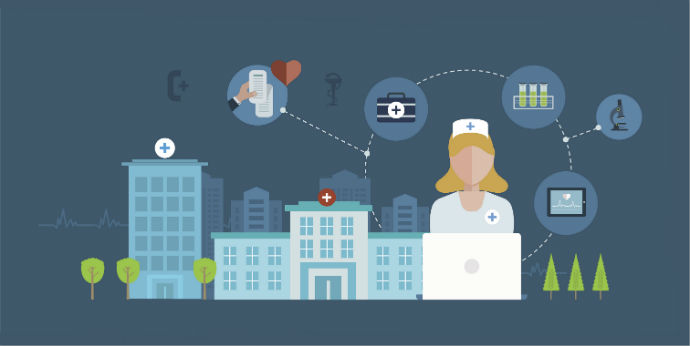Secure Communications Key in Recent Uniphy Mobile App Launch
Catholic Health Services adds Uniphy Health to their IT infrastructure to give clinicians better and more direct communication within the organization.

Source: Thinkstock
- Uniphy Health announced the release of its mobile app to physicians associated with Catholic Health Services (CHS). The app aims to increase secure and immediate communication among hospital staff and physicians.
The app provides all hospital staff and physicians with clear visibility of real-time on-call schedules and organization wide updates so clinician availability is always known and all staff are aware of changes in daily workflow.
The app operates on a secure cloud-based platform and offers several features, including a searchable physician directory, image sharing for remote diagnoses, organizational news alerts, message delivery, and read receipt confirmation.
“At a time when health care organizations are being asked to run more like efficient corporations, they need the same powerful groupware tools that businesses have depended on for decades,” Uniphy Health Co-Founder and Chief Medical Officer Dr. Stuart Hochron said. “Not having those systems in place makes it harder to deliver high-quality care to consumers.”
CHS saw the need for a solution to enhance communication and collaboration among its staff, with the idea that better communication results in more efficient and accurate patient care. Many healthcare organizations are faced with issues that are caused by a failure to communicate, said Uniphy Health CEO Adam Turinas.
CHS Vice President for Clinical Transformation and Population Health Joel Shu, M.D. said that Uniphy Health’s app met the requirements CHS was looking for. He explained that Uniphy Health’s solution being a separate system for clinical communications worked best for CHS’ health IT infrastructure. It was ideal because the communication system is not built on to another solution, such as an electronic health record (EHR) solution.
Communication among clinicians is an important part of building a successful practice especially where population health is concerned.
A Harris Poll and PerfectServe survey conducted last year highlighted the communication issues facing healthcare organizations. The survey outlined fragmented technologies, unclear workflows, and HIPAA as some of the challenges inter-organization communications need to facilitate.
More than ninety percent of respondents believed that interoperable, secure, and mobile communications are vital to building a high-quality population health program.
Organizations without a clear and direct mode of communication can run into problems when it comes to exchanging patient data. Most clinicians also found that lack of organized communication can lead to low-priority calls disrupting patient care.
More than half of the respondents reported that they did not feel EHRs were an efficient way to communicate with physicians, prompting many organizations to seek alternative methods and separate communication from EHRs.
Healthcare providers generally believe that better communication and the availability of patient data at the right time and place will solve efficiency issues and improve population health management.
The inefficiency of EHRs drove the adoption of mobile device communication and unified mobile communication programs and applications. The survey also found that many organizations were embracing mobile communication but were not using HIPAA compliant means. Respondents said they were receiving unsecure voicemails and messages containing protected health information (PHI).
Bringing clinician communications to mobile devices calls for a communication system that works smoothly on a mobile OS as well as a desktop environment.
Adding a real-time communication solution to a health IT infrastructure will help clinicians get the information they need when they need it. Stronger and secure communication will also ease clinicians and patients by suppressing low-priority notifications and calls when clinicians are seeing patients, providing a better workflow.
